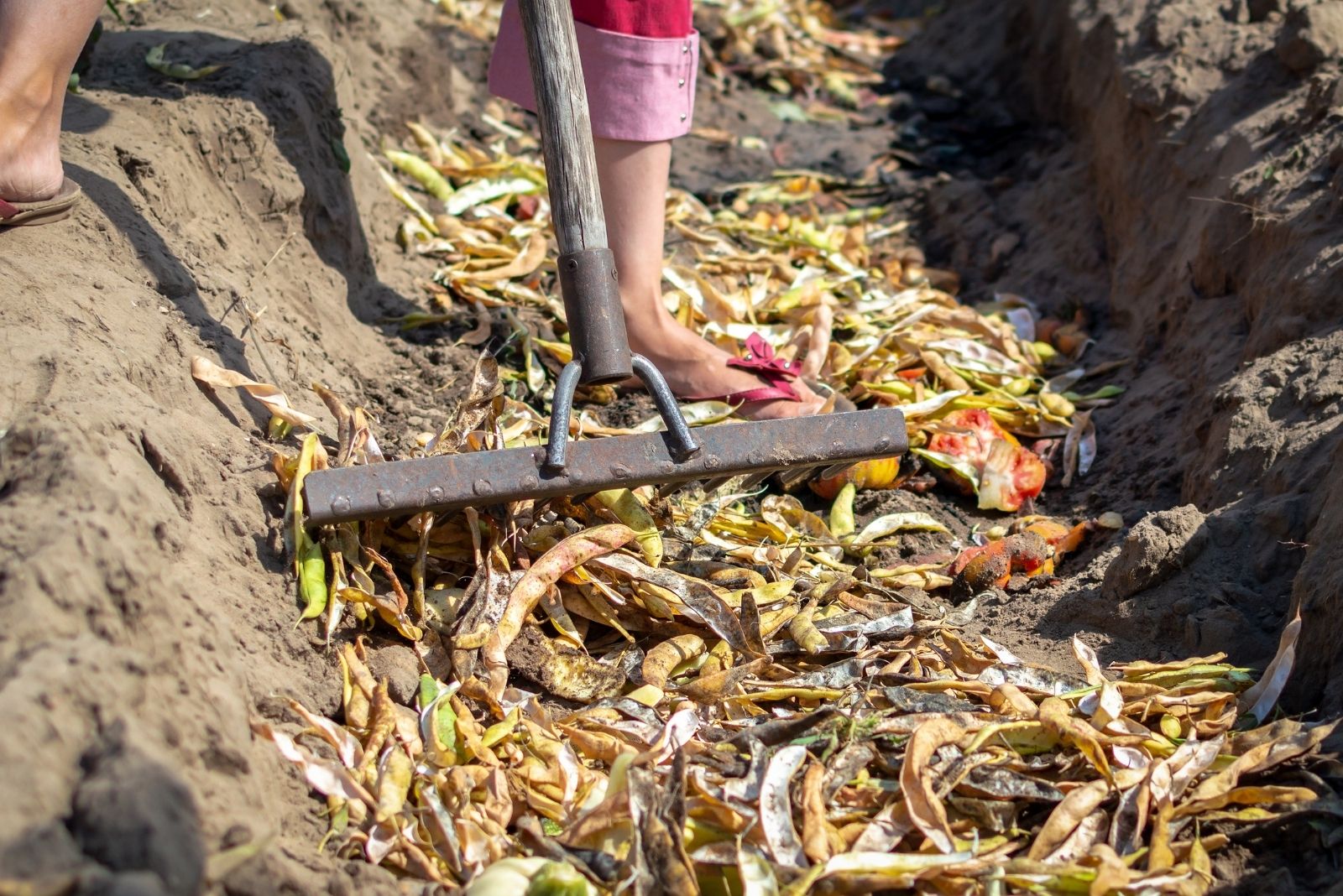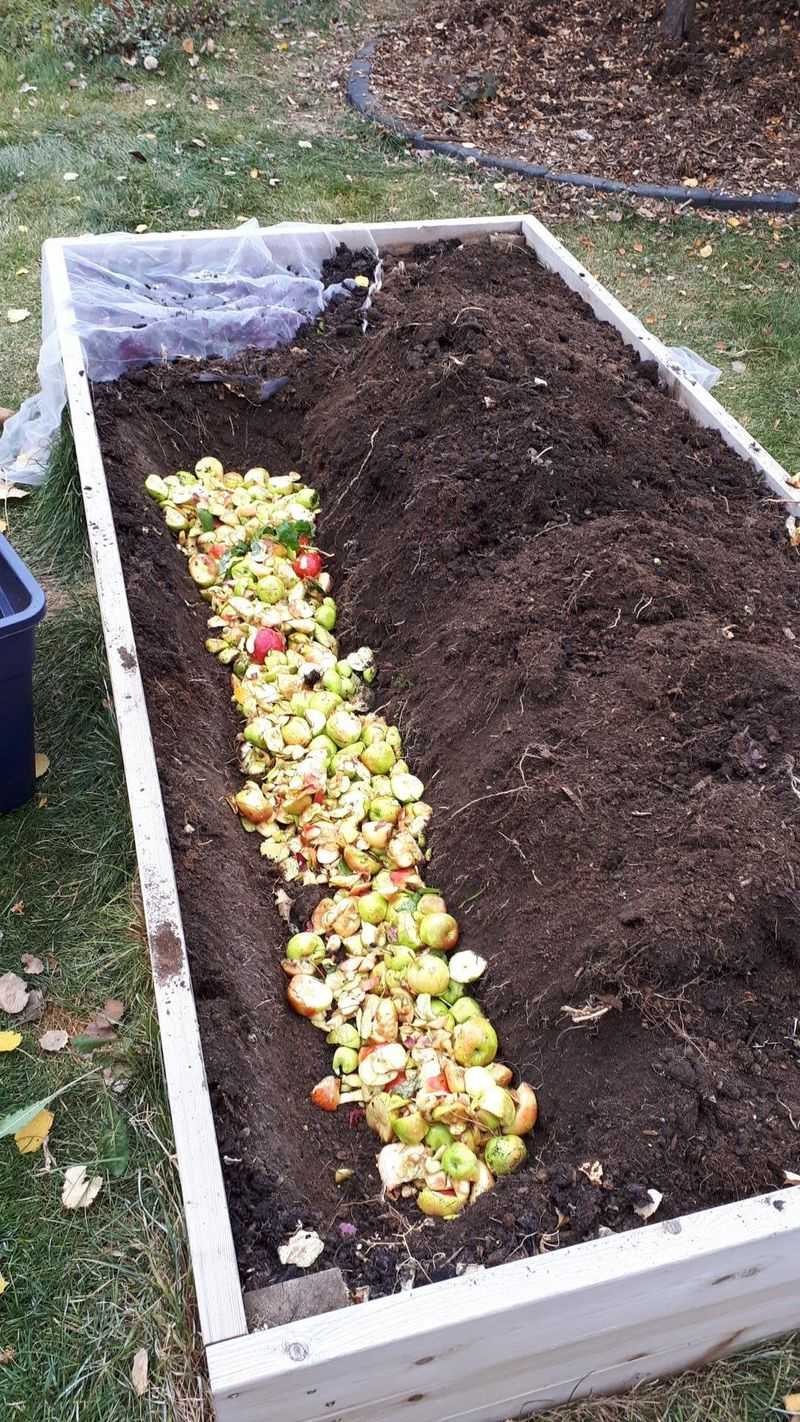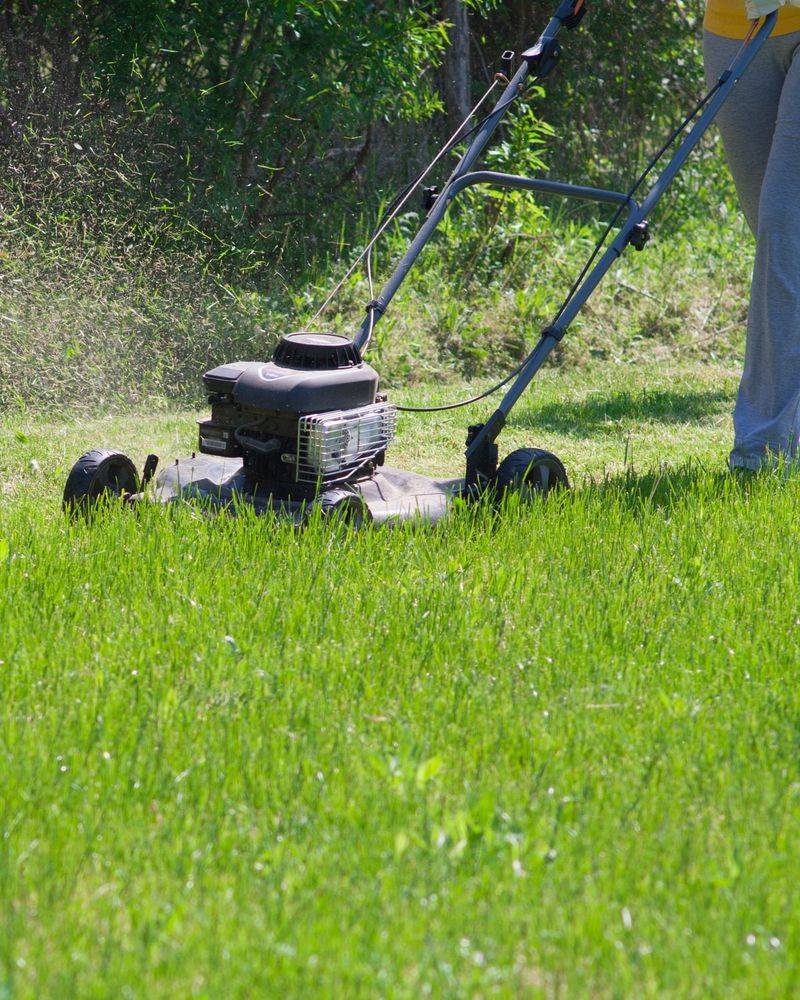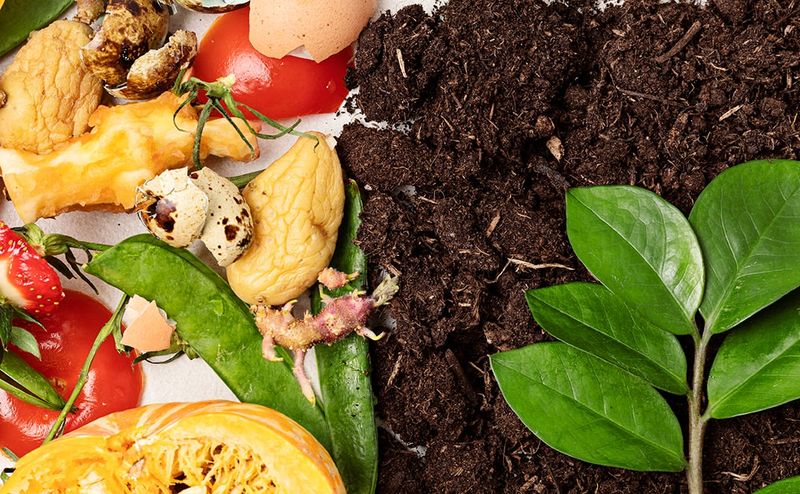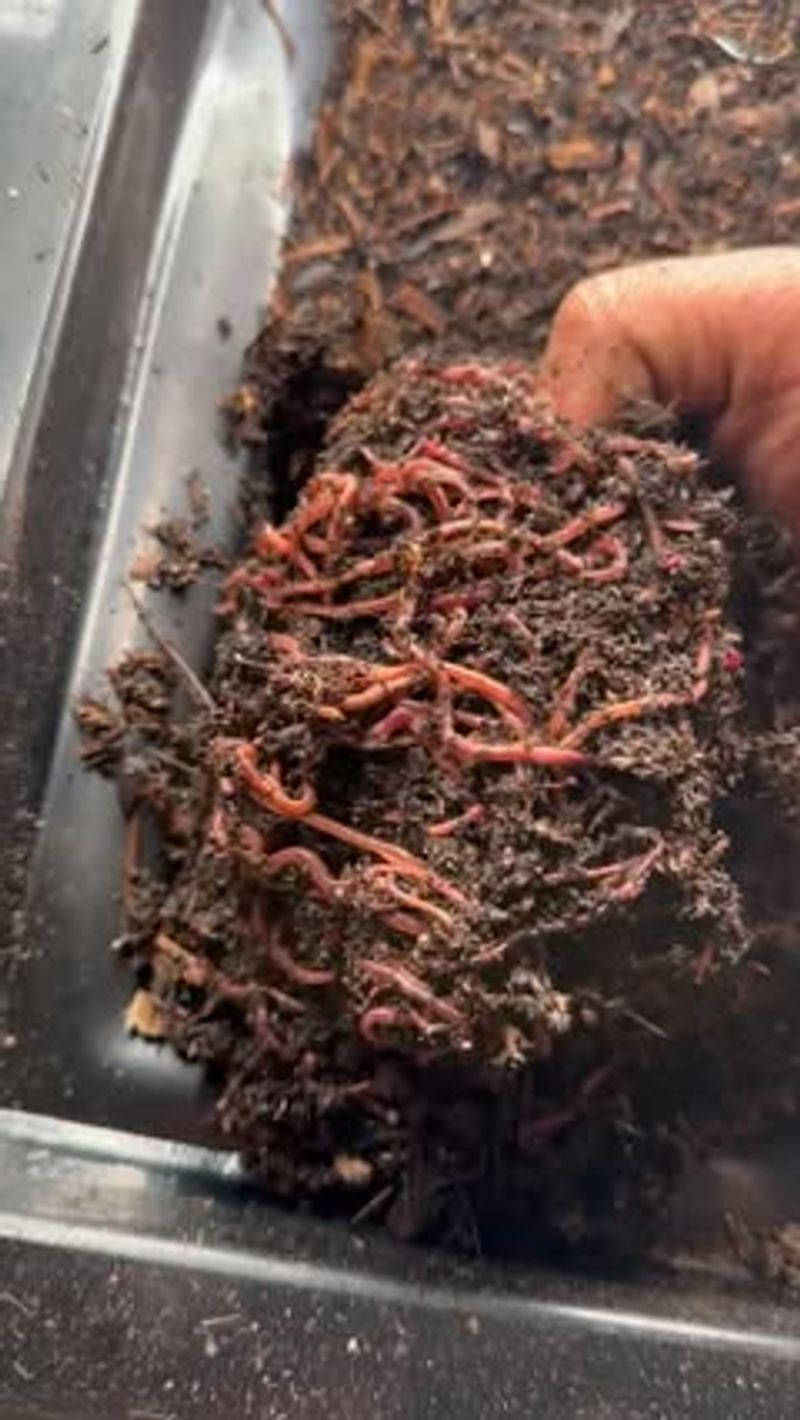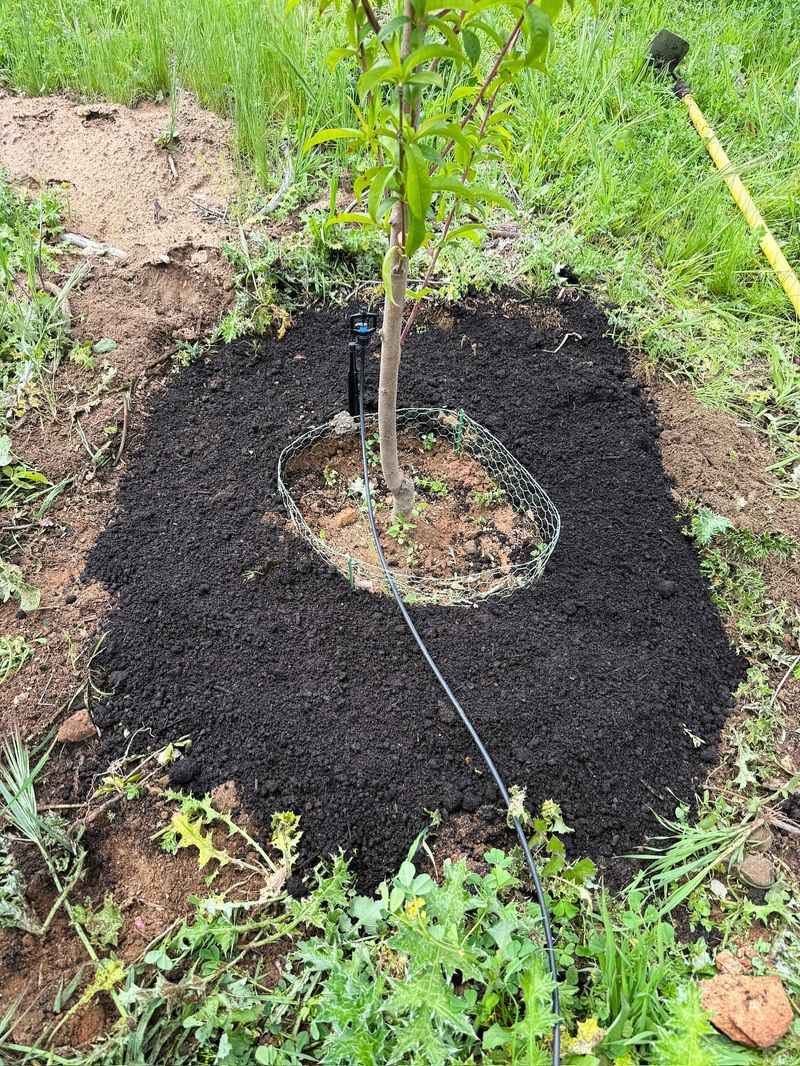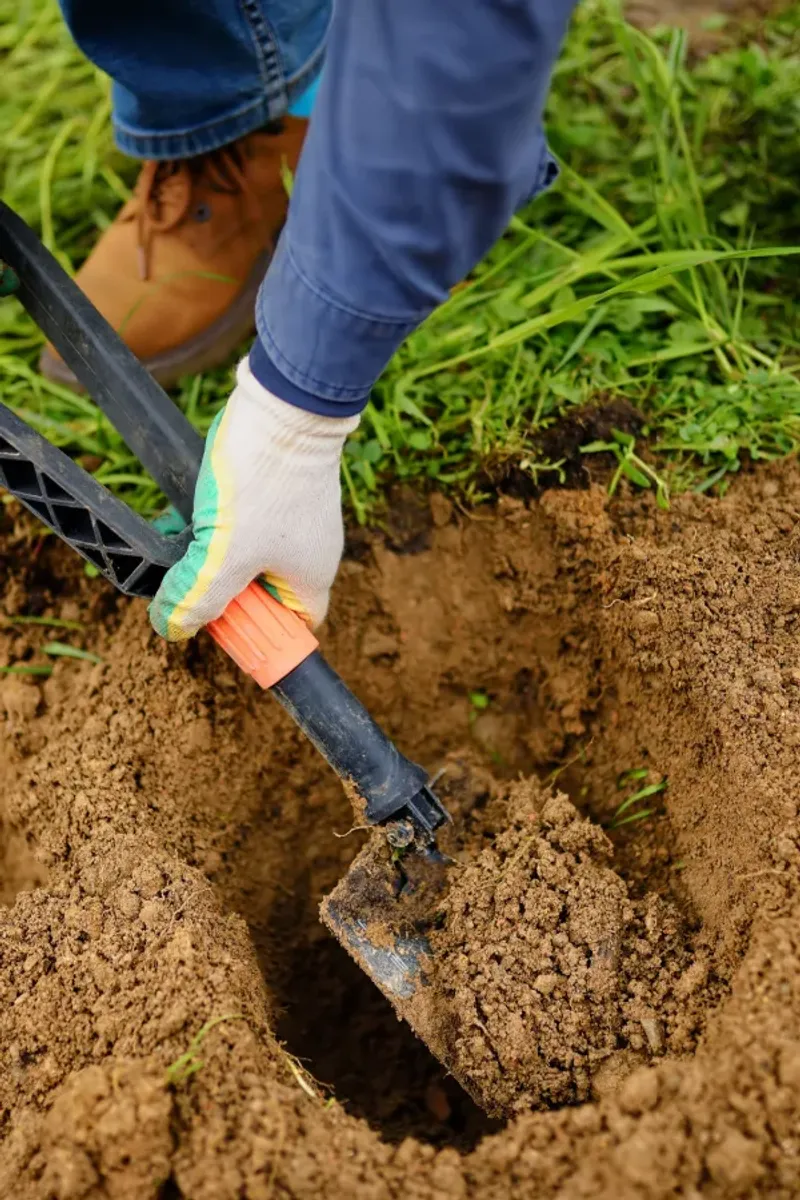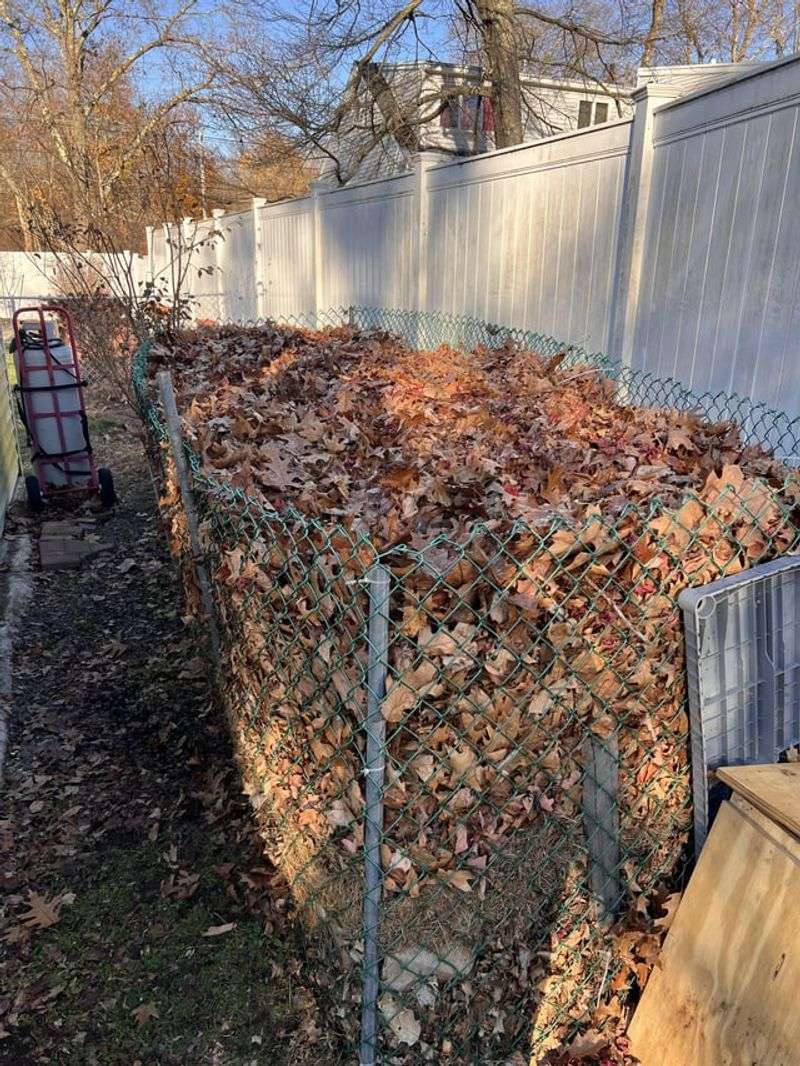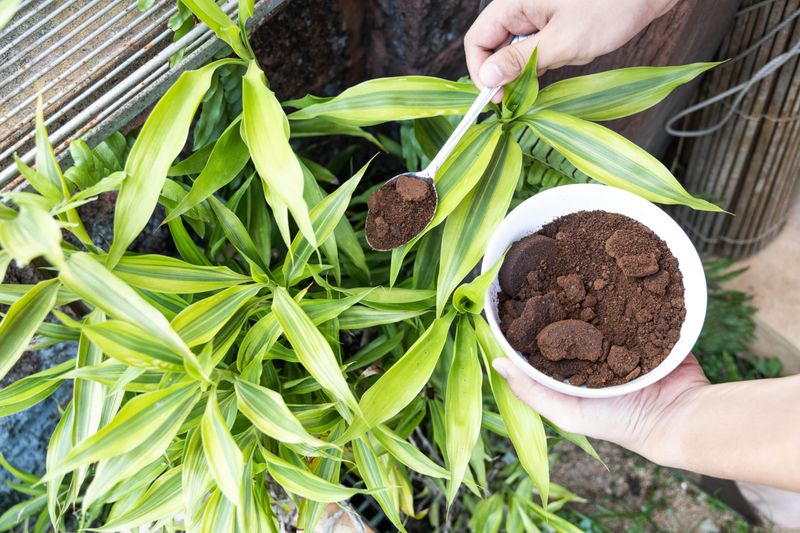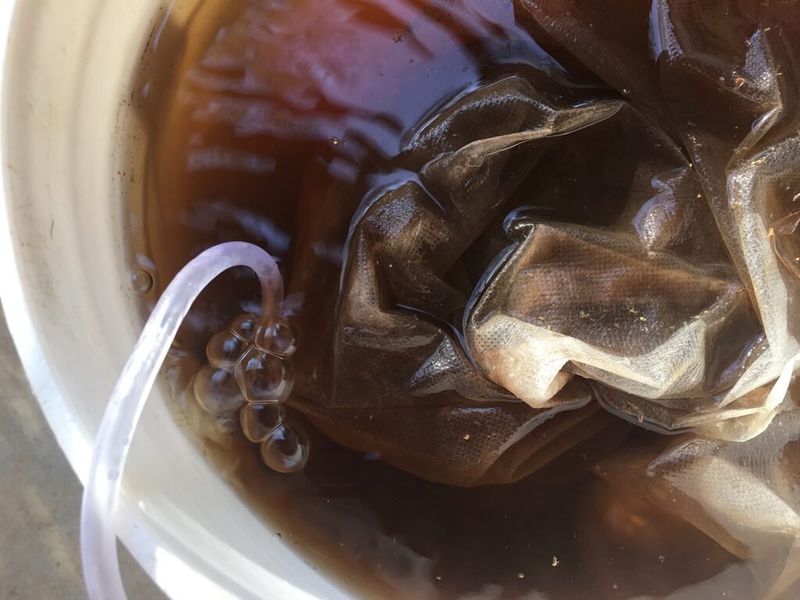Florida’s hot, humid climate brings its own set of composting challenges—but also some big advantages. The warmth speeds up decomposition, but moisture and pests can get in the way. Still, with the right approach, composting here is totally doable.
You don’t need fancy bins or endless turning to make rich, dark compost. Simple methods like trench composting or pile-and-cover systems work great in our subtropical conditions.
Less effort, more payoff. With Florida’s year-round growing season, a steady supply of homemade compost can do wonders. It feeds your garden, cuts down on waste, and keeps your soil thriving all year long.
1. Trench Composting Right Where You Need It
Dig a shallow trench between rows of vegetables or around fruit trees, toss in kitchen scraps, and cover with soil. The Florida heat speeds up decomposition, and your plants get nutrients exactly where they need them.
I’ve found this method perfect for my citrus trees. No hauling compost across the yard or maintaining a separate pile. When summer rains come, those buried scraps break down even faster, feeding my Key lime tree without any extra effort.
2. Let Your Mower Do Double Duty
Simply leave grass clippings on your lawn after mowing. This “grasscycling” returns nutrients directly to your soil with zero extra work. In Florida’s growing season, this can provide up to 25% of your lawn’s nitrogen needs.
The trick is mowing regularly so clippings are small enough to decompose quickly. During our rainy season, I mow twice weekly to keep the grass manageable and the clippings fine enough to vanish into the lawn within days.
3. Create A No-Turn Compost Pile
Traditional composting advice says to turn your pile regularly, but that’s work! Instead, layer brown materials (fallen oak leaves, pine needles) with green materials (kitchen scraps, fresh grass) and let Florida’s heat do the work.
My no-turn pile takes longer to finish—about 6-8 months versus 2-3 for a regularly turned pile—but requires almost no effort. The bottom layer becomes usable compost while I continue adding to the top, creating a continuous supply.
4. Recruit Worms As Your Composting Team
Florida’s native earthworms can transform your garden waste into black gold without you lifting a finger. Create a simple worm bin using a plastic tote with drainage holes, bedding material, and food scraps.
During summer, I keep my worm bin in the shade under my mango tree. The worms process my coffee grounds and vegetable scraps into rich castings that my tropical plants absolutely love. No turning, no effort—just harvest the bottom layer every few months.
5. Deploy Compost Bags Around Trees
Fill old burlap bags or pillowcases with yard waste and kitchen scraps, tie them closed, and place them around the base of trees. Over time, nutrients leach into the soil during our frequent rain showers.
The bags gradually decompose along with their contents. My avocado trees have thrived with this method. When hurricane season threatens, I simply move the bags to a sheltered spot until the storms pass, then return them to continue their slow-release feeding.
6. Create Compost Holes For New Plants
When preparing to plant something new, dig a hole twice the size needed, fill the bottom with kitchen scraps, and cover with a layer of soil before planting. The decomposing material creates a time-release fertilizer directly under your plants.
Last spring, I planted tomatoes using this method. By burying banana peels and eggshells in the planting holes, my tomatoes received calcium exactly where they needed it. No mixing compost, no spreading fertilizer—just plant and forget.
7. Leaf Mold: The Laziest Compost
Rake fallen leaves into a chicken wire cage in a shady corner and forget about them. That’s it! In Florida’s humidity, leaves break down into incredible soil conditioner without any turning or additional materials.
The oak leaves from my neighbor’s massive tree used to annoy me until I discovered leaf mold. Now I collect them eagerly each fall. After 6-12 months, they transform into dark, crumbly material that holds moisture in our sandy soil better than any store-bought product.
8. Coffee Ground Direct Application
Skip the compost pile entirely and sprinkle used coffee grounds directly around acid-loving plants like gardenias, azaleas, and blueberries. The grounds slowly release nitrogen and slightly acidify our typically alkaline Florida soils.
My local coffee shop saves grounds for me in five-gallon buckets. Once a month, I spread them around my blueberry bushes and gardenias. The grounds also deter slugs and snails, which helps protect my strawberries from these persistent Florida garden pests.
9. Compost Tea Brewing Station
Hang an old pillowcase filled with finished compost (store-bought works too) in a bucket of water for 24-48 hours. The resulting “tea” becomes a powerful liquid fertilizer that can be poured directly onto plants during regular watering.
During our intense growing season, I keep a brewing station under my potting bench. The Florida heat speeds up the brewing process, creating a nutrient-rich solution in just a day. My orchids and bromeliads respond dramatically to monthly feedings with this effortless plant booster.

